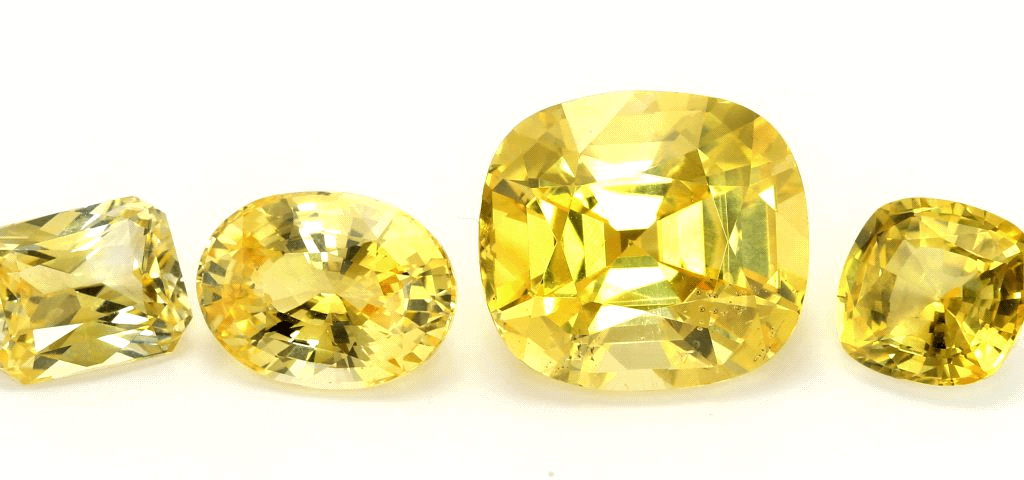Yellow Sapphire
Source: Australia, Madagascar, Myanmar, Sri Lanka, Tanzania, Thailand, USA.
Birthstone: September
(Alternate: Lapis) The name “Sapphire” (Saphir French or German, Zafir Spanish, Zaffiro Italian) was originally derived from Greek “Sappheiros,” as well as the Sanskrit Kuruvinda “Sanipruja” meaning “Hard Stone,” and the Hebrew word “Sappir” meaning “Gem.” The biblical “Acts of the Apostles” referred to Sapphira, a woman who was executed for lying to the Holy Ghost.
Sapphire (Corundum) Composition; Sapphire belongs to the same “Aluminium Oxide” (Alumina) mineral family (Corundum) as Ruby, but Sapphire is far more Abundant due to the larger occurrence of its Chromium, Iron, and Titanium colouring agents. Sapphire colors range from Canary Yellow to Blue, Brown, Gray, Green, Orange, Pink, Purple, and Colourless.
Sapphire Corundum has no cleavage planes, but does have a Conchoidal fracture, and can be parted more easily in certain directions. Corundum’s crystal habit forms into six-sided barrel-shaped crystals that taper into pyramid terminations. Most Sapphires contain inclusions which are visible to the naked eye or under low under magnification. These inclusions may appear as Clouds, Feathers, Veils, Silk Fibers, or Rutile Needles, and may resemble an Internal Finger-Print impression in clearer stones.
Star Sapphire (Asterism); Certain varieties of Sapphire can exhibit a six-pointed “Star” or “Asteriated” effect from light reflections bouncing off of microscopic needle-shaped Rutile Crystals (also referred to in the ruby trade as “Silk”) which intersect at 60 degree angles. Star Sapphires are Semi-Transparent to Opaque, and the Star effect is more apparent when a Cabochon cut is used for the stone.
A uncut/unpolished natural sapphire

mix cut of natural yellow sapphire

Identification
Color: Typically blue, but varies
Crystal habit : As crystals, massive and granular
Twinning: Both growth twins (in various orientations) and polysynthetic glide twinning on the rhombohedron
Cleavage: Poor
Fracture: Conchoidal, splintery
Mohs scale: Hardness of 9.0
Luster : Vitreous
Streak: Colorless
Diaphaneity: Transparent to nearly opaque
Specific gravity: 3.98~4.06
Optical properties: Abbe number 72.2
Refractive index: nω=1.768–1.772 – nε=1.760–1.763,
Birefringence: 0.008
Pleochroism: Strong
Melting point: 2,030–2,050 °C
Fusibility: Infusible
Solubility: Insoluble
